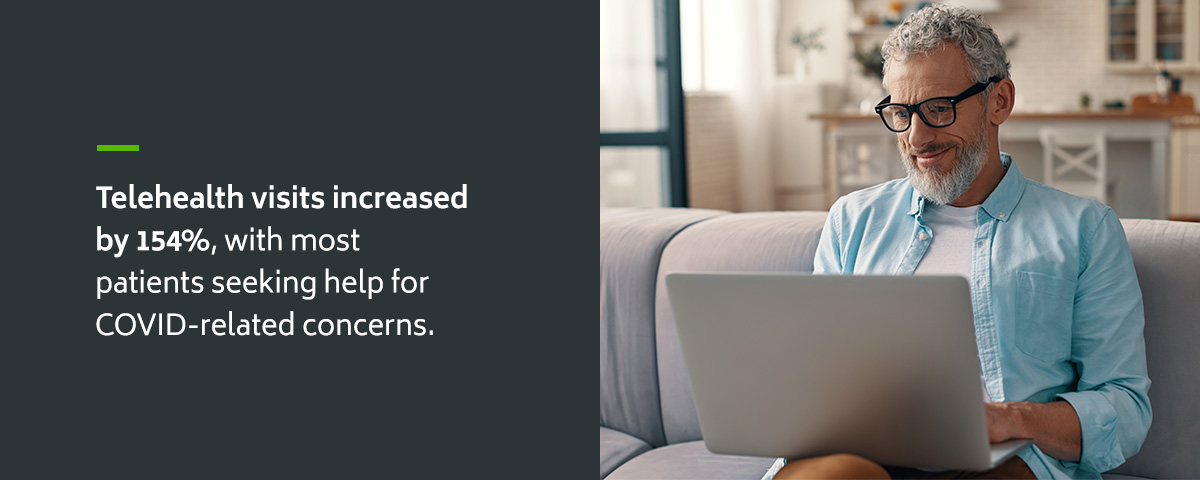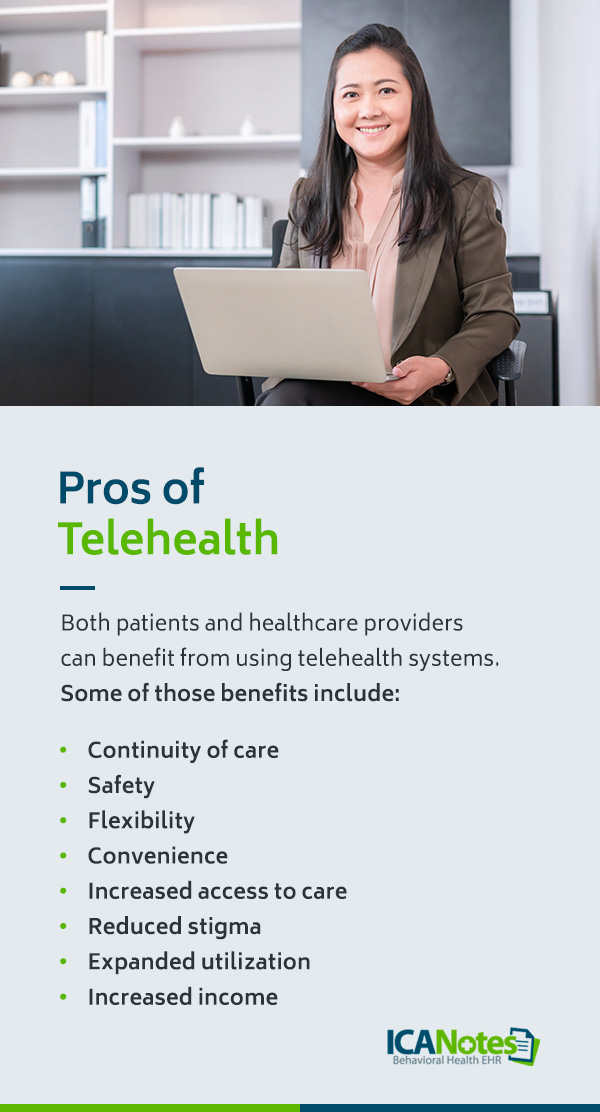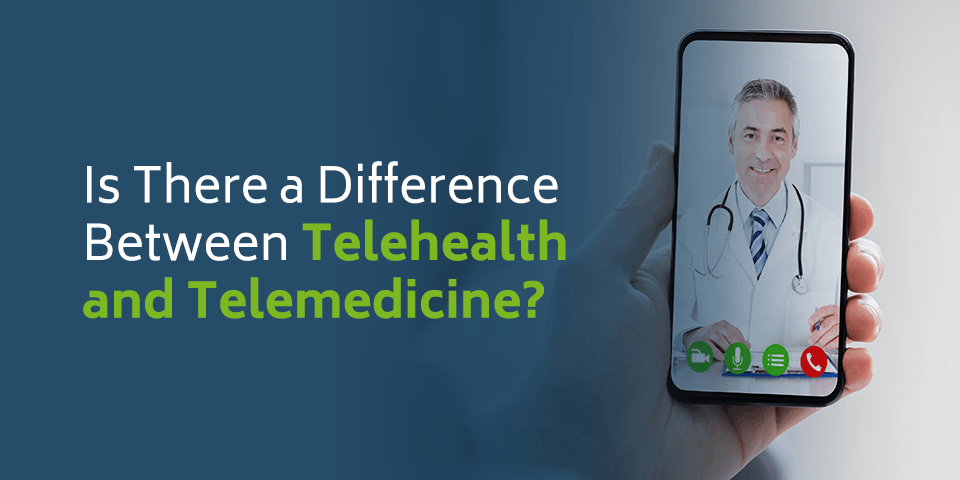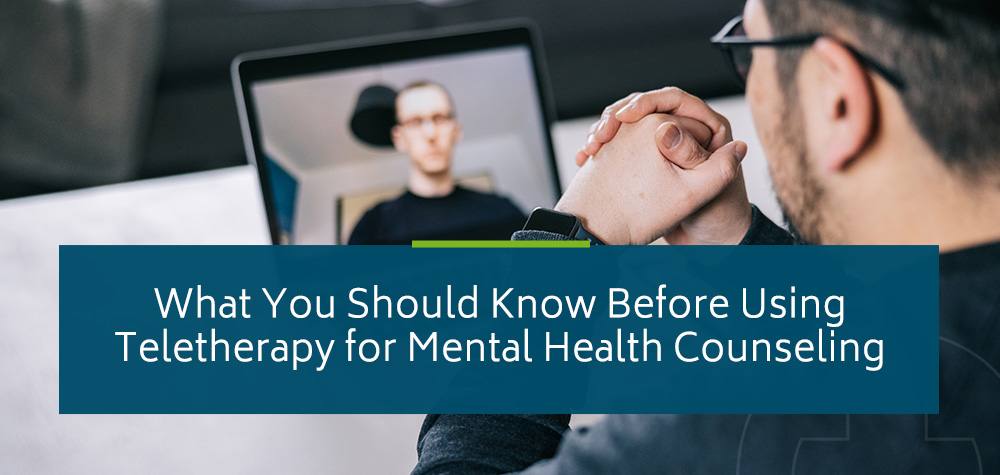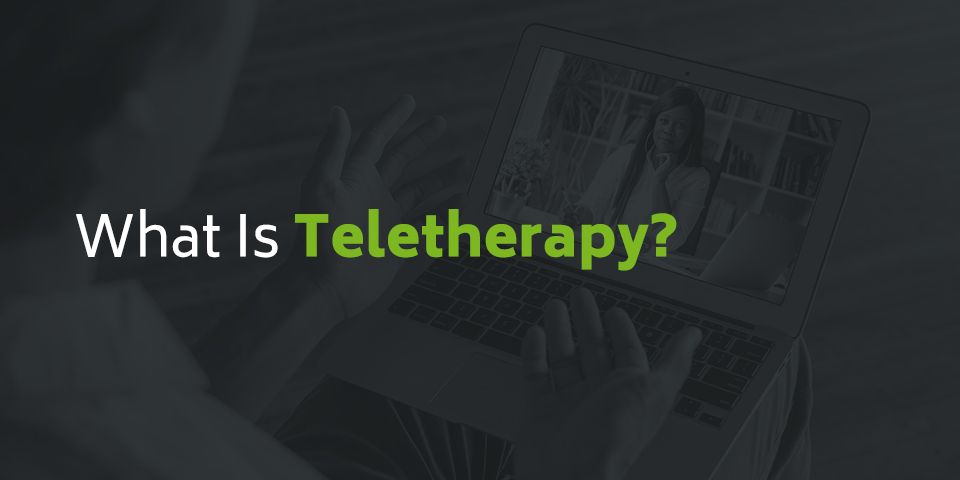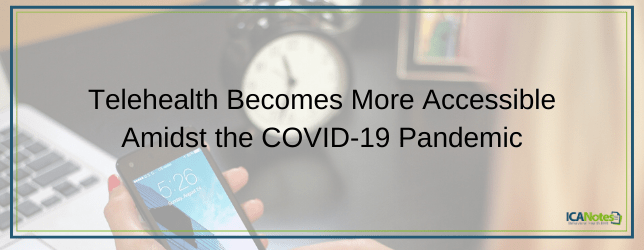Is Telehealth the New Norm?
Due to widespread lockdowns aimed at reducing the risk of community transmission of COVID-19, clinics across the world scrambled to find an effective way to care for their patients without spreading diseases. Telehealth has become a viable solution for many practices because it enables providers to interact with and care for patients from a distance.
Telehealth is often confused with telemedicine, but it's important to note that these are different concepts. While telemedicine refers specifically to remote clinical services, telehealth is a much broader term that includes any form of remote care, including non-clinical services such as medical education and provider training.
Essentially, all telemedicine is included in telehealth, but telehealth expands beyond telemedicine.
However, as we move past the COVID-19 pandemic, many in the healthcare industry wonder about the future of telehealth and whether it will continue to be as popular as it is now. This post addresses those concerns and explains the pros and cons of telehealth in a post-COVID world.
Table of Contents
- A Brief History of Telehealth
- How the Pandemic Changed Telehealth
- Uses of Telehealth
- Pros of Telehealth
- Cons of Telehealth
- Is Telehealth Here to Stay?
- Changes to Look Forward to in Telehealth
- Telehealth Is Here to Stay
Free Ebook: Going Virtual
Everything you need to start a virtual behavioral health practice.
A Brief History of Telehealth
Telehealth has been around for longer than you might expect. It began in the late 19th century with the invention of the telephone — as more people installed telephone lines in their homes, access to healthcare providers increased significantly.
Before the late 19th century, physicians mostly interacted with their patients by making house calls. If a patient needed to see their doctor for any reason, they'd need to either send someone to fetch them or visit their office themselves. This process was time-consuming and inefficient, leading to delayed care and avoidable complications. However, that all changed once telephones became widespread, opening a new communication channel between providers and patients.
Telephones did more to expand access to care than connect patients to physicians. In 1948, doctors used telephones to send radiological images to specialists — one of the first examples of data sharing in the healthcare industry.
The American Telemedicine Association (ATA) was formed in 1993 to promote widespread industry adoption of telehealth practices. The group now includes more than 400 member organizations and focuses on fostering good telemedicine policy, providing helpful education and resources and advocating for the benefits of telehealth.
The outbreak of the COVID-19 pandemic in early 2020, combined with the widespread use of computers and mobile devices, pushed telehealth to the forefront of the healthcare field, where it has been prominent ever since.
How the Pandemic Changed Telehealth
Sweeping lockdowns ordered in response to the COVID-19 pandemic sent the healthcare industry scrambling for solutions. Patients could not make it to their appointments due to spikes in cases that pushed health systems past capacity, or they avoided visiting clinics for fear of contracting the virus.
However, virtual options provided an effective solution. Before March 2020, video sessions were rare, and clinics generally only made phone calls to discuss test results or follow up with patients. That month, telehealth visits increased by 154%, with most patients seeking help for COVID-related concerns.
In response to such a sharp spike in usage, the Centers for Medicare and Medicaid Services (CMS) issued a waiver that temporarily allowed standard Medicare reimbursement for telehealth appointments regardless of diagnosis. Other key changes included in this waiver include:
- Patients may receive telehealth services in any setting, including their homes.
- Patients may receive telehealth services from any provider, including those they have not seen before.
- Physicians licensed in one state may provide care to patients in different states.
- Physicians may reduce or waive cost-sharing for telehealth appointments.
Whether these changes will remain in effect is still unknown. However, it is certain telehealth post-COVID will place a heavy focus on increasing quality outcomes and access to care for all patients.
Uses of Telehealth
Telehealth has many applications across the healthcare field. There are three ways providers can deliver telehealth:
- Synchronous: Synchronous care is when patients and providers communicate in real-time using video conferencing, phone calls or live chat features.
- Asynchronous: Asynchronous care is when messages, images or other data are stored in the system and shared with the provider later.
- Remote monitoring: This involves a patient's measurements, such as weight, blood pressure and heart rate, are sent to the doctor remotely.
Many telehealth programs will combine two or all three of these delivery methods to create the best solution for both patients and providers. For example, a provider may rely on remote monitoring and asynchronous messaging to keep an eye on patients with chronic conditions. Or a behavioral therapist might open asynchronous communications to patients between synchronous sessions.
Some specific applications for telehealth across various healthcare specializations include:
- Follow-up appointments
- Prescription management
- Urgent care visits
- Physical and occupational therapy
- Mental health counseling and therapy
- Psychiatric medication management
- Lab test results
- Chronic care management (CCM)
- Eye exams
- Nutrition counseling
- General wellness visits
Pros of Telehealth
Both patients and healthcare providers can benefit from using telehealth systems. Some of those benefits include:
- Continuity of care: Even in emergencies like the COVID-19 pandemic, telehealth enables patients and providers to continue providing regular care.
- Safety: Using telehealth for non-urgent appointments, follow-ups and other services reduces the risk of transmitting contagious diseases, keeping clinicians and patients safe.
- Flexibility: Providers have the flexibility to adapt their schedules to better accommodate patients who may not be able to make appointments during regular office hours.
- Convenience: Telehealth enables patients to receive care from anywhere as long as they have a stable internet connection. It also eliminates the need to wait in crowded waiting rooms to see a provider, improving the patient experience.
- Increased access to care: Patients who lack reliable transportation or have medical issues that prevent them from traveling can see their healthcare providers without ever needing to leave their homes.
- Reduced stigma: Unfortunately, fear of stigma and discrimination often deters people from getting help. Many people avoid seeking mental health treatment due to the social stigma surrounding mental illness. Telehealth services offer patients a way to get the care they need from the comfort and privacy of their homes. Additionally, telehealth provides patients living in underserved areas with greater access to mental health professionals.
- Expanded utilization: More patients are using telehealth to seek care than ever. According to the U.S. Department of Health and Human Services (HHS), Medicare visits through telehealth skyrocketed to 52.7 million visits in 2020 from 840,000 in 2019. That same year, behavioral healthcare visits also increased 32-fold through the use of telehealth.
- Increased income: Telehealth programs open more opportunities for generating revenue by expanding office hours, removing barriers to care for vulnerable patient populations and reducing the number of no-shows and cancellations.
Cons of Telehealth
Of course, it's essential to discuss the potential downsides of telehealth. Because every practice's circumstances are different, these aspects may not apply to everyone — however, you need to consider the potential cons before implementing any solution.
Potential disadvantages to using telehealth can include:
- Telehealth security risks: Data security is a concern for any digital system, including telehealth programs. Adhering to proper compliance measures and investing in cybersecurity tools can reduce your risk of cyberattacks and increase patient trust.
- Lack of coverage: Many insurance companies have expanded their policies to include telehealth visits, but some insurers still only cover in-person visits, which can prevent patients from using telehealth systems.
- Difficulty examining patients: Providers rely on patients to report symptoms and conditions accurately during telehealth sessions. However, patients may forget or choose not to report symptoms that providers could have caught in an in-person session, which can compromise treatment.
- Licensing problems: Medical licensing laws vary between states, so some clinicians may be legally barred from providing care to patients living in other parts of the country.
Is Telehealth Here to Stay?
While the clinical side of telehealth will likely be used less frequently as clinics return to offering in-person visits, telehealth will continue to be an integral part of health care moving forward.
Payment for virtual care is still a major uncertainty for many clinics. While Medicare reimbursements and other payment blocks have been lifted while the pandemic is in effect, the question remains — how will clinics generate revenue when COVID-19 is finally under control? The level of adoption ultimately depends on whether payers are willing to continue paying for remote services.
Changes to Look Forward to in Telehealth
More providers are adopting telehealth than ever before, and more software companies are developing new systems to meet the increased demand. The following will be crucial developments in the future of telehealth.
Regulation Changes
Emergency regulations established in response to the pandemic may expire, so the rules are likely to change in the coming years to accommodate. Some examples include:
- HIPAA regulations: In response to COVID-19, providers now have increased flexibility with the applications the Health Insurance Portability and Accountability Act (HIPAA) permits them to use. Covered healthcare providers may use non-public facing applications such as Zoom and Skype to provide care to patients, or they may opt for a fully HIPAA-compliant solution for additional privacy.
- Prescriptions: The HHS has temporarily allowed authorized providers to prescribe controlled substances remotely without needing an in-person evaluation. This rule will remain in effect until the COVID-19 emergency is no longer in effect.
- Licensing: During the COVID-19 pandemic, providers can deliver telehealth services across state lines under state and federal policies.
User Experience Improvements
Moving forward, the patient experience should be at the forefront of every provider's mind. Patients expect a streamlined digital experience without having to juggle multiple applications and websites. Additionally, user-friendly telehealth systems lower the technological barriers that many patients may face — easy navigation and centralized programs open access to care for those without extensive technology experience.
Some crucial user experience considerations include:
- Patient portals: A patient portal is a key touchpoint between patients and providers, so incorporating user experience considerations here is critical. Effective portal programs allow patients to view clinical data and billing information, make payments, communicate with their providers, request prescription refills and schedule appointments, all from one centralized source. It also streamlines your workflow by automating tedious manual tasks, which frees your clinical staff to spend more time on tasks related directly to patient care.
- Integrated systems: Integration is key to any user-friendly telehealth system. While piecing together multiple apps or websites may be cheaper upfront, it is largely ineffective as it complicates access to information. An integrated electronic health record (EHR) system keeps everything in one convenient place, saving time and money.
- Compliance: As telehealth grows, more companies are likely to seek HIPAA compliance. Choosing a system with this qualification can boost patient confidence and ensure high-quality care.
Increased Quality of Care
While the overall response to telehealth has been largely positive, some providers are still hesitant to adopt it in their practices due to reservations about whether telehealth is as effective as in-person care. Ultimately, its effectiveness depends on its application — some providers, such as surgeons, simply cannot offer quality care remotely at this time.
In the mental health field specifically, practitioners have found that providing care via telehealth in addition to in-person sessions is beneficial and even advantageous for many patients. For example, many children and teens benefit from virtual therapy sessions because it allows them to receive the care they need in a setting where they feel comfortable — on a video call in their own space. Of course, counseling and therapy are incredibly individualized forms of care, so some younger patients will do better in face-to-face sessions.
Determining how telehealth can fit into your practice is crucial to improving the quality of care you can provide to your patients.
Integrated Data Sharing
Most services that allow data sharing are easier and more convenient to use than standalone systems that require separate data input. A platform that uses integrated data sharing reduces the risk of error inherent in manual data entry and provides a single place to view a patient's information, even pulling data from multiple apps and consolidating it into one data set.
For example, many telehealth applications are beginning to incorporate data sharing with common fitness apps to gather data regarding patient lifestyles.
Wearable Technology and Patient Monitoring
Wearable technology is popular. According to a Pew Research study, approximately 20% of Americans consistently used a fitness tracker or smartwatch in 2020. These devices collect data on many health measures, including:
- Activity levels
- Sleeping patterns
- Heart rate
- Blood oxygen levels
When patients consent to share their wearable tech information with their providers, they allow providers to get a more complete view of their lifestyles. As a result, physicians can make more accurate diagnoses and prescribe more effective treatments.
Remote monitoring is especially important for patients with chronic conditions, such as diabetes, arthritis and heart disease. Providers can ensure patients follow prescribed treatment regimens by monitoring patient data and providing recommendations for changing treatment through messaging functionalities.
Check Out our Telehealth Webinar:
Telehealth Is Here to Stay
Based on the increasing adoption of telehealth systems nationwide, the future of telehealth looks bright.
The ICANotes Telehealth feature allows you to continue serving your patients from a distance through remote individual and group sessions. Our video conferencing platform is fully HIPAA-compliant and compatible with Windows and Mac OS, so any office can easily implement it. You can also use other helpful features like virtual waiting rooms, interoffice chat and screen sharing to make your telehealth appointments more efficient.
To learn more about our telehealth offerings, schedule a live demo of our platform or contact our team today. We're happy to answer any questions you may have.
Free Ebook: Going Virtual
Everything you need to start a virtual behavioral health practice.



